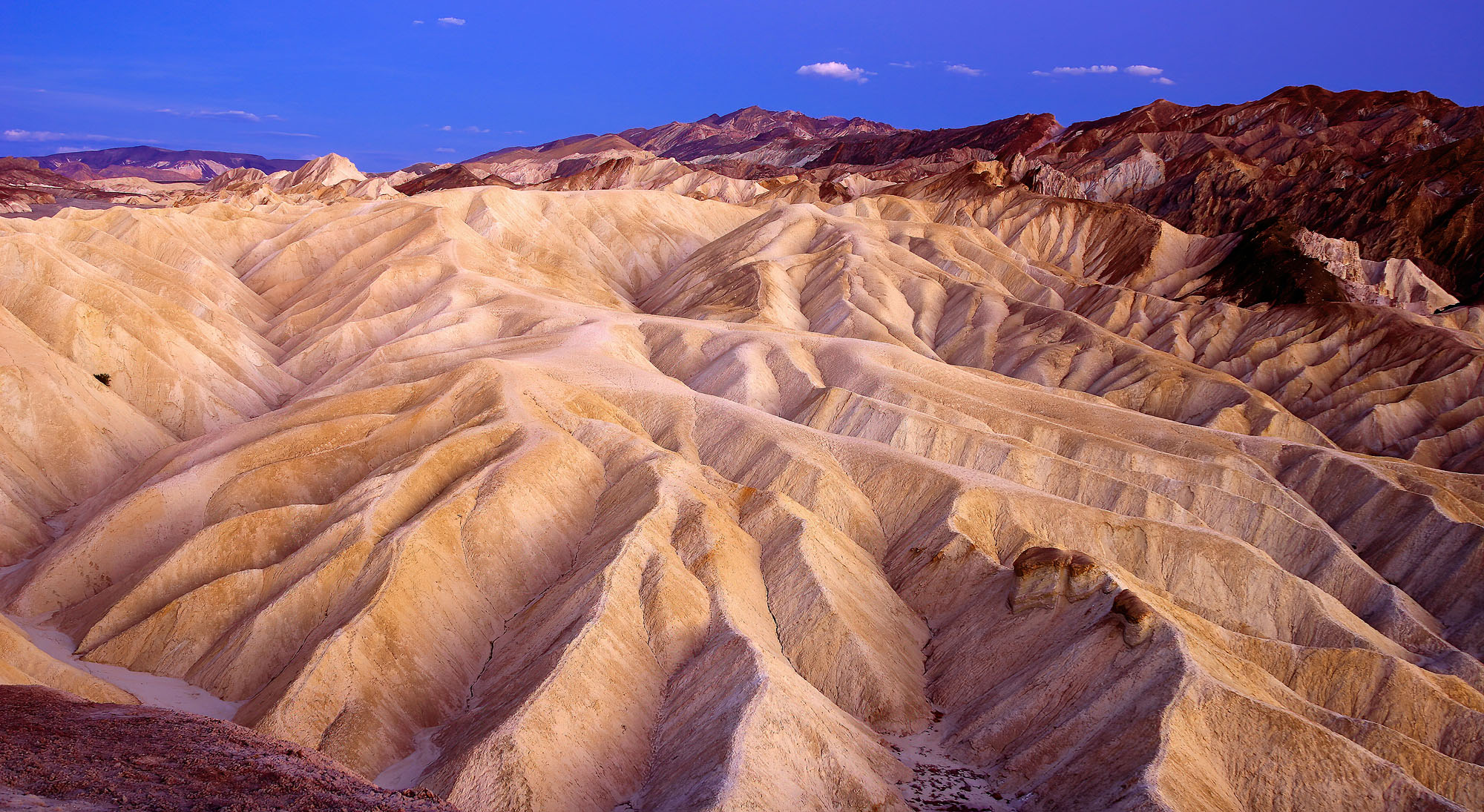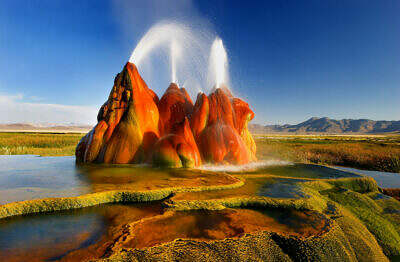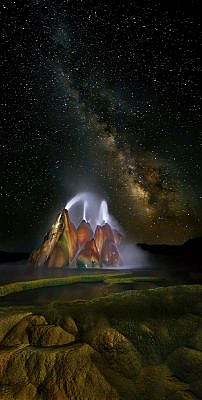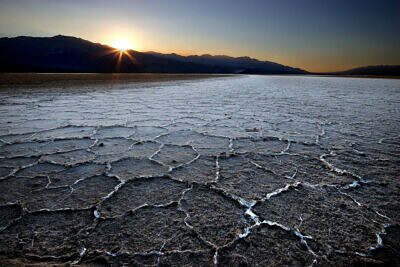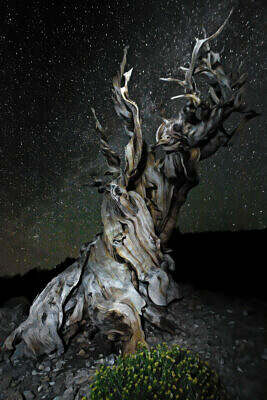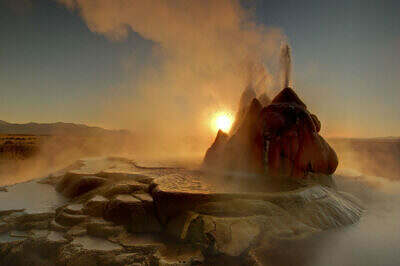Dawn in the Badlands at Zabriskie Point in Death Valley in Nevada immerses the landscape in a unique atmosphere. The wind reaches storm intensity to compensate for the extreme temperature differences between the hot valley floor and the rather cool air of the elevated surroundings. Deep majesty and a magical light spreads across the valley.
-
How Death Valley formed
Zabriskie Dreams
- Anywhere out of this World
- Moments of Eternity
- Gateway to the Mysteries
- Bristlecone Cosmos
- Ephemeral Splendor

